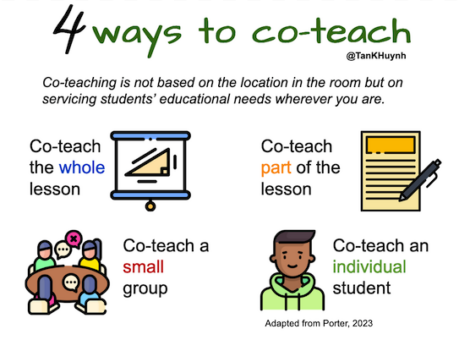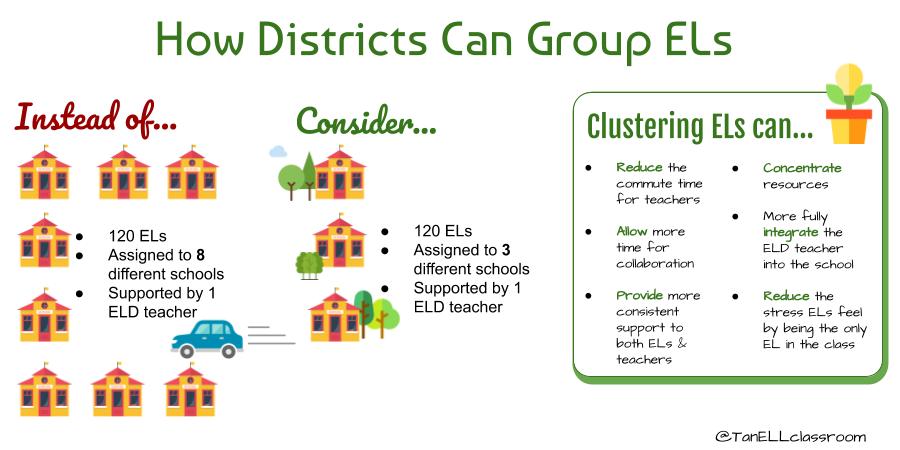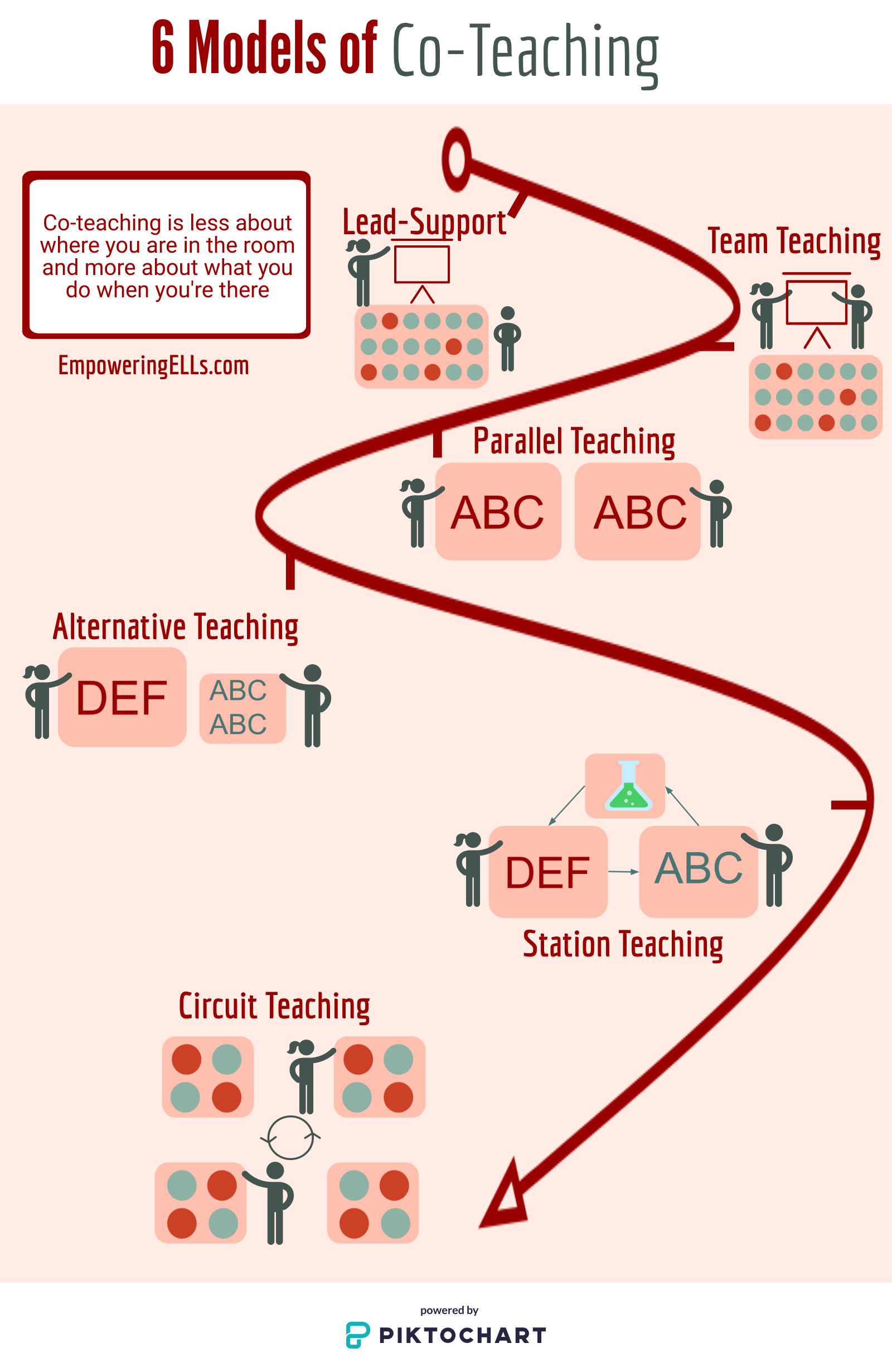Co-Teaching Where and When We’re Needed
A MiddleWeb Blog
My 12th year of co-teaching looks the same as my first year. Yes, that’s correct! When I co-teach, I can be found:
- beside the assigned students
- in a small group
- rotating around the class
- at the front of the room
- on the floor
- literally anywhere!
My physical locations in the classroom have never really changed throughout the years. But my attitude about them has.
For the longest time I thought the only true form of co-teaching was when I was in the front of the room – co-leading instruction beside my colleague to the entire class. Because of this misconception, I often felt disappointed that most of the time I was sitting passively beside students, wishing that I was in the front. For years I let my location in the room define co-teaching, but now I define co-teaching as the service I’m providing.
Since both my colleague and I want students to learn, I now look for opportunities to serve the learning needs at that moment. Serving students is not location-bound but defined by the type of instruction we provide. Therefore, I can serve students by co-teaching:
- the whole lesson
- part of the lesson
- a small group(s)
- an individual student (Porter, 2023)
Notice how this list is service-oriented while the first list was location-based. The type of service we are providing is more important than our location in the classroom. Therefore, the opportunities to serve the educational needs of students are broader with this refined perspective. There are meaningful ways to serve anywhere in the room.
►Co-teach the whole lesson: When both teachers have the content-specific expertise, they can assign a particular person to a specific part of the lesson. The beginning might be assigned to Teacher A, the middle to teacher B, and the ending to both.
►Co-teach part of the lesson: When one teacher has more content expertise, that person can lead the direct instruction of the content. However, the English language development teacher can then stand in front of the class to teach students how to complete the graphic organizer, which was co-planned to have sentence starters and guiding prompts.
►Co-teach a small group: When several students require similar support and extra guidance, teachers can assign themselves to serve different groups. Teacher A might go with Group 1 and 3 as they need help with applying the content. Teacher B can work with Group 2 and 4 as they need guidance in writing about the content. While many educators are hesitant to group multilinguals together in the same class or group, clustering really does better support ML students and maximize school resources.
►Co-teach an individual student: When a specific student needs particular support, co-teach by working with that individual student. Teacher A can work with Student J as she needs to be nudged to see the connections between concepts. Teacher B can work with Student M as he needs help understanding the particular vocabulary for today’s lesson.
Notice how the way each teacher serves is based on their expertise. At times the content teacher is needed because of their discipline-specific knowledge. Other times the English development teacher leads instruction related to their unique skill set.
For more ideas on how to guide students together, see my post on the 6 Models of Co-teaching which explains several different systems – like Station Teaching and Lead-Support Teaching – in more detail. Our collaborative practice will evolve if we guide our co-teaching based on what students need, not by a location in the classroom. Then you can be assured that wherever you are is a place where you can serve students’ educational needs.








































